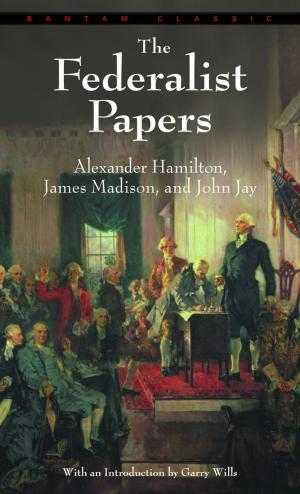| Author: | Gerard Charles Wilson | ISBN: | 9781876262303 |
| Publisher: | Gerard Charles Wilson | Publication: | November 24, 2018 |
| Imprint: | Smashwords Edition | Language: | English |
| Author: | Gerard Charles Wilson |
| ISBN: | 9781876262303 |
| Publisher: | Gerard Charles Wilson |
| Publication: | November 24, 2018 |
| Imprint: | Smashwords Edition |
| Language: | English |
In 2012, a passage in David Marr's book POLITICAL ANIMAL: THE MAKING OF TONY ABBOTT caused uproar across Australia. The passage was about an incident of violence that (allegedly) occurred thirty-five years earlier when Abbott was a student at Sydney University. Abbott’s many critics in politics and the media considered the (alleged) incident indisputable evidence for the views they had long held about him.
Abbott was sexist and hated women; men were the natural leaders of society; in politics he was brutal and insensitive. Above all this was the irrational discriminatory religion that motivated him. Abbott had no place in politics. Indeed, feminist Susan Mitchell strove to make the case in her book TONY ABBOTT; A MAN'S MAN that Abbott was ‘dangerous’.
But how well do their books stand up to scrutiny? How well does their judgment of Abbott, widely accepted among the left, bear close investigation? How much is a caricature for political purposes, and how much is supported by the evidence?
In TONY ABBOTT AND THE TIMES OF REVOLUTION, the author investigates. He traces Abbott’s political development from school through to the end of his time at Sydney University (1963-1980). A contemporary of Abbott’s and sharing a similar background, the author draws on his experiences and reactions to the tumultuous times of the 1960s and 1970s in addition to the documentary research. The book is in four parts: the school years and the 1960s revolution; student radicalism at Sydney University 1973-1975, the prelude to Abbott’s arrival on campus; Abbott’s engagement with the far left (1976-1980); and the media and Abbott.
What emerges from the author’s tracing of Abbott’s combat with the far-left on campus is the waging of a heroic battle on behalf of Western Civilisation against the combined forces of Marxism in its multiple manifestations.
But the book is not only about Tony Abbott, the student motivated by a carefully defined natural law conservatism. It is as much about what it means to be a philosophical conservative in a leftist world. Tony Abbott is a symbol of the true-blue philosophical conservative. It is as much about the social upheaval of the times (1960s and 1970s) and about the author’s reflections. Tony Abbott becomes a vehicle through which the author expresses his scathing critique of the student rebellion.
In the final chapter, the author reviews the evidence for the incident of alleged violence in Marr's book, and finds none of it makes sense.
In 2012, a passage in David Marr's book POLITICAL ANIMAL: THE MAKING OF TONY ABBOTT caused uproar across Australia. The passage was about an incident of violence that (allegedly) occurred thirty-five years earlier when Abbott was a student at Sydney University. Abbott’s many critics in politics and the media considered the (alleged) incident indisputable evidence for the views they had long held about him.
Abbott was sexist and hated women; men were the natural leaders of society; in politics he was brutal and insensitive. Above all this was the irrational discriminatory religion that motivated him. Abbott had no place in politics. Indeed, feminist Susan Mitchell strove to make the case in her book TONY ABBOTT; A MAN'S MAN that Abbott was ‘dangerous’.
But how well do their books stand up to scrutiny? How well does their judgment of Abbott, widely accepted among the left, bear close investigation? How much is a caricature for political purposes, and how much is supported by the evidence?
In TONY ABBOTT AND THE TIMES OF REVOLUTION, the author investigates. He traces Abbott’s political development from school through to the end of his time at Sydney University (1963-1980). A contemporary of Abbott’s and sharing a similar background, the author draws on his experiences and reactions to the tumultuous times of the 1960s and 1970s in addition to the documentary research. The book is in four parts: the school years and the 1960s revolution; student radicalism at Sydney University 1973-1975, the prelude to Abbott’s arrival on campus; Abbott’s engagement with the far left (1976-1980); and the media and Abbott.
What emerges from the author’s tracing of Abbott’s combat with the far-left on campus is the waging of a heroic battle on behalf of Western Civilisation against the combined forces of Marxism in its multiple manifestations.
But the book is not only about Tony Abbott, the student motivated by a carefully defined natural law conservatism. It is as much about what it means to be a philosophical conservative in a leftist world. Tony Abbott is a symbol of the true-blue philosophical conservative. It is as much about the social upheaval of the times (1960s and 1970s) and about the author’s reflections. Tony Abbott becomes a vehicle through which the author expresses his scathing critique of the student rebellion.
In the final chapter, the author reviews the evidence for the incident of alleged violence in Marr's book, and finds none of it makes sense.















